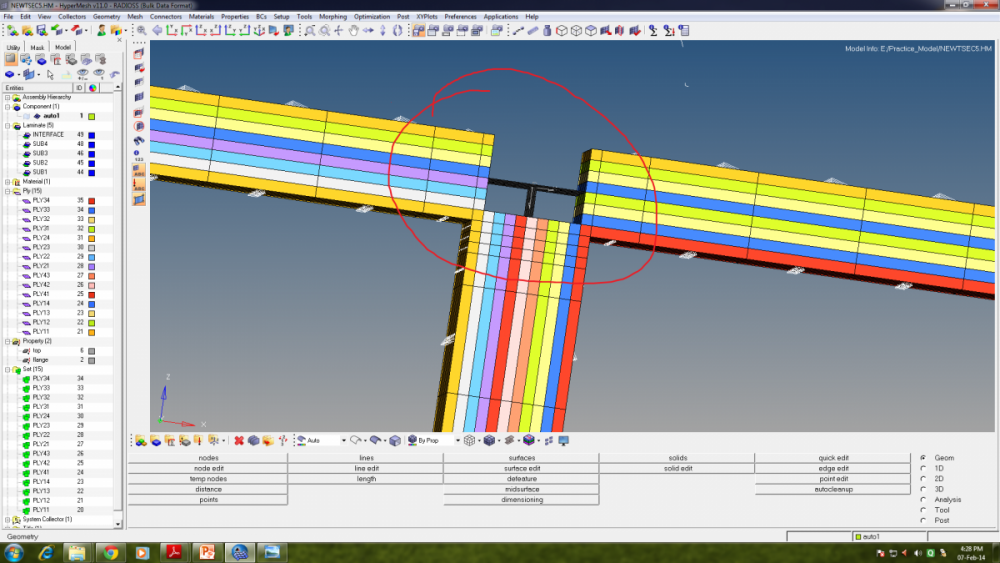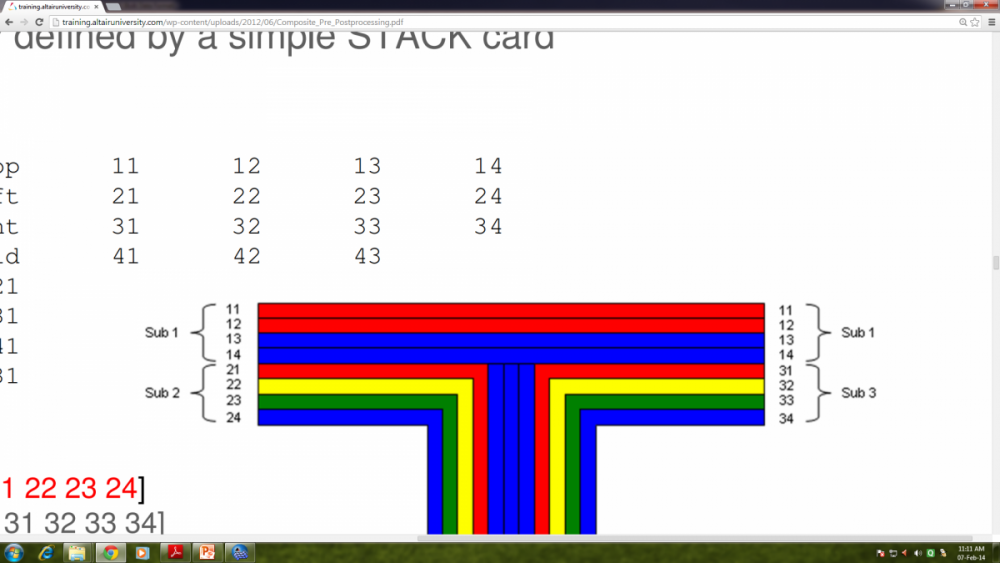Hello there ,
I am started learning composite modelling in hypermesh for radoiss solver(bulk data). I started with T-section. Everything has been checked(element normals, mat orientation) before i created plies and i created stacking sequence using sublaminate and interface.
The problem i am facing is i couldn't get the proper T-connection at the center of the T-sec which u can see in the 1st snap and the ideal T-sec should be like the one in the 2nd snap.
I really have no idea of what went wrong.
I need a suggestion!.
regards, chandru<?xml version="1.0" encoding="UTF-8"?> <?xml version="1.0" encoding="UTF-8"?>
<?xml version="1.0" encoding="UTF-8"?>